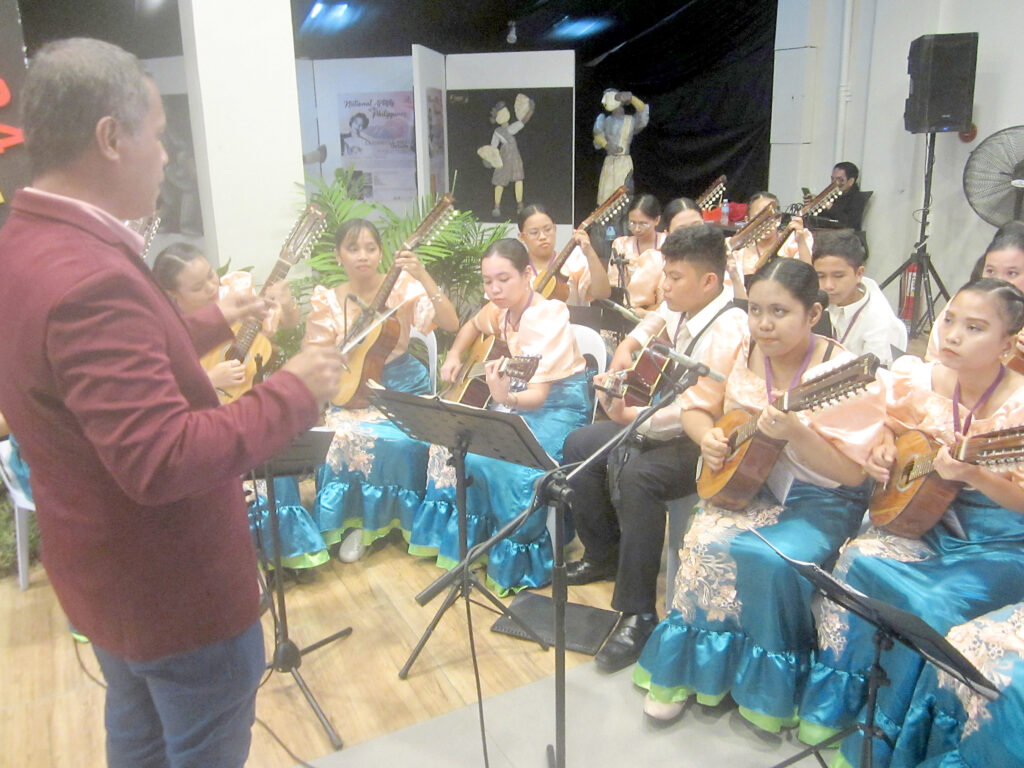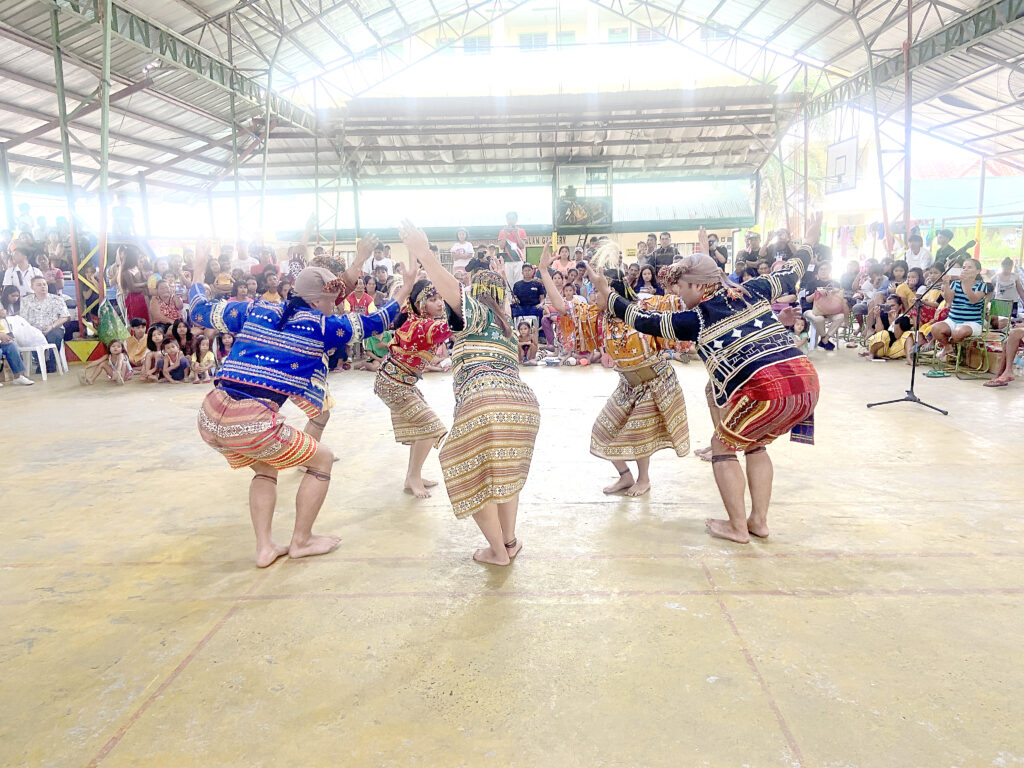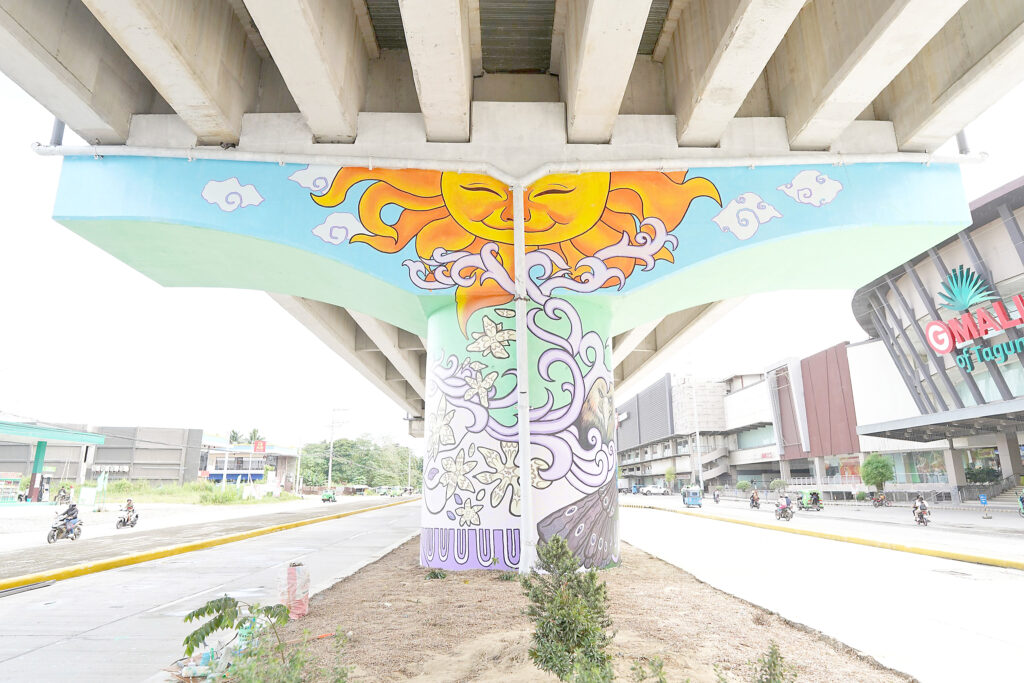I have been attending Pasinaya: The CCP Open House Festival at the Cultural Center of the Philippines since it started in 2005, being part of the public relations team to assist members of the press to cover what has become the country’s multi-arts event, man the media table and fulfill other urgent tasks. Everyone was always on the move until the festival closed by evening. This year, the Pasinaya Festival was different, extending its reach to other regions for the first time — to Iloilo City, Iloilo, in the Visayas and Tagum City in Mindanao.

Tasked to assist some Metro Manila-based media members to cover the Tagum leg of festival, I was filled with excitement and apprehension since it was my first time visiting Tagum. The first-class component city and capital of the province of Davao del Norte has always been a source of fascination and curiosity for me.
Tagum City has its own appeal. From being a predominantly agricultural area, it has become one of Mindanao’s fastest-growing urban centers with rapidly developing infrastructure due to its strategic location in southern Mindanao. It has been referred to by several epithets — Palm City of the Philippines, City of Festivals, Music Capital of the South, Marching Show Band Capital of the Philippines, City of Golden Opportunities and City of Perfect Harmony. Tourism has recently become one of the city’s economic drivers. Exporting wood products, such as chips, veneer plywood and lumber, is also a source of income but fresh bananas remain as its main export.
When we arrived early morning at the Francisco Bangoy International Airport in Davao City, the main gateway to the region and almost two hours away from Tagum, we received news about the floodings in the Davao Region. Days prior to our trip, it has been raining non-stop, resulting to floods in many areas in the region.
While the rains stopped when we arrived in Davao City, the roads were still not passable. We waited for hours for good news that we can finally proceed and experience the festival. We were informed that only large trucks can reach Tagum. By late afternoon, a bus fetched us from the airport going to our temporary accommodation.

The following day, on 3 February, we waited for the final clearance to travel to Tagum City, and by three in the afternoon, we were on our way. Our travel took three hours, taking several detours and longer than usual. We saw rice fields and some houses submerged in water along the way. We encountered strong currents on the road in the town of Carmen.
As they say, the show must go on. When we reached Tagum, a festival component, the Pagtitipon, which gathers CCP Kaisa sa Sining (KSS) members, has already commenced. Originally set for 2 February, the gathering became a haven for artists and cultural workers, as they shared their experiences going to Tagum.
The Kaisa sa Sining Regional Arts Centers is a partnership program of the CCP, through its Cultural Exchange Department (CED), which aims to strengthen further the CCP’s linkages and cooperation with regional educational institutions, non-government organizations, and local government units to broaden public participation in the arts, promote and showcase artistic excellence and facilitate collaborations among communities. CED was the organizer of the Tagum leg.
During the Pagtitipon, CED manager Chinggay Bernardo welcomed the delegates and shared what artists, performers and attendees can expect about the festival. Delegates were treated to a night of cultural performances from different regional performing groups.
Events on 4 February included the unveiling of the KSS collaborative murals created by 16 visual artists on beam posts under the Tagum City flyover, which emphasize the importance of conservation of nature and promulgation of culture and the arts; outreach performances of some groups at the gymnasium of Pipisan Maug National High School; and activities at the gymnasium of Tagum City National Comprehensive High School.
Believing in the power of art to heal and with the three venues, the Tagum City Historical and Cultural Center, City Hall Atrium, and Meditation Center, becoming inaccessible, production managers and organizers of Pasinaya Festival in Tagum decided to bring the festival and various performances to four evacuation centers, now filled with people who were affected by flooding and rains, in the barangays of San Miguel, Bingkungan, Cuambogan and Mangkilam, including the Tagum City Cathedral. Artists and performers brought solace and warmth in a time of distress. In spite of the dire situation, audiences loved the performances.

We were able to proceed to the Tagum City Historical and Cultural Center for the concert of The Nightingales and the Men Ensemble Philippines, which was followed by the closing program of the festival, with a live feed all the way from the CCP Complex.
“We congratulate and extend our sincerest gratitude to the generous partners of the Cultural Center of the Philippines for the implementation of the first run of the Pasinaya Festival in Tagum City,” said CCP vice chairperson Margie Moran-Floirendo who joined the festivities in Tagum City. “Their valuable efforts and support have made the Pasinaya in Tagum City successful and meaningful despite the challenges faced by the artists, performing groups, production and organizing teams.”
She also thanked local partners and supporters — the Tagum City local government, the Tagum City Tourism and Cultural Office, the Musikahan sa Tagum Foundation and the Tagum City Council of Women Foundation.
Despite the challenges, the Tagum leg, which was held from 3 to 6 February, gathered more than 300 artists, performing groups, production staff and KSS representatives from Luzon, the National Capital Region, the Visayas and Mindanao, and continued with its four-day festival programming.
The regional performing groups under the CCP Ugnayan sa Sining Visayas and Mindanao presented their original performances
— “Hinablon: Threads of Visayan Creativity” and “Bunnal: Breaking New Grounds for Mindanao” — in the municipalities of Asuncion and Dujali in Davao de Oro on 6 February.
Artists and performing groups who participated in the first Mindanao leg of the festival included the KSS visual artists from Luzon — Marlin Lopez from Nueva Vizcaya, Brendale A. Tadeo from Zambales, Tristan Bamba from Mauban in Quezon, Carlo Dimaano from Laguna and Johnley Mayorga from Marinduque — with facilitators Salvador Ching, Roen Capule and Jonathan Carpio from Bulacan. Visual artists from the Visayas who also joined were Lloyd Develos from Roxas City, Capiz; Brent Naranja from Murcia, Negros Occidental; Engelbert G. Ramirez from Himamaylan City, Negros Occidental; and Efraim Alfaras from Iloilo City, while the Mindanao visual artists were Sarsalem Malekysu from General Santos City, and Xyla Sumalinog, Ejay Que Doronio, Reymart Ursabia, Ruben Langamen, Lestine Sarillana, Maegz Ordoña and Jamedith Abuan, all from Tagum City.
Performing groups Ari Tau Folkloric Society from Nueva Vizcaya, Bataeno Lahing Magigiting Vocal Ensemble of Bataan High School for the Arts, Likhang Sining Dance Company from Batangas City in Batangas and Pundaquit Virtuosi from Zambales flew in to participate in the festival.
On the other hand, four groups from the Visayas joined in as well — the Iloilo National High School from Iloilo City, Leyte Dance Theater from Tacloban City, Kasing Sining from Bohol, Kultura De Artes from Himamaylan City and Mandaue Children and Youth Chorus from Mandaue City in Cebu).
There were a number of performing groups from Mindanao — AORNHS (Atty. Orlando S. Rimando National High School) Rondalla from Maco, Davao de Oro; Kathara Dance Theater Collective, Kaliwat Performing Arts Collective and University of Mindanao Chorale from Davao City); RMMC (Ramon Magsaysay Memorial Colleges) Sinag Laya, RMMC Teatro Ambahanon and Mindanao Hiphop Collective from General Santos City; MSU (Mindanao State University) Tambuli Cultural Dance Troupe from Tawi Tawi; MSU Sining Kambayoka Ensemble from Marawi City, Lanao del Sur; MSU Sining Kandidilimudan Ensemble from Maguindanao; and Mandayanayaw from Tagum City.
Aside from Tagum City, volunteers and members of the production and technical staff came from Ozamiz City in Misamis Occidental, Iligan City, General Santos City and Agusan del Sur.
Although most of the activities and shows did not push through, and despite floods and rains, the artistic spirit was not dampened and the warm responses of the evacuees and audiences made the Pasinaya Festival in Tagum even more meaningful and an unforgettable experience, affirming that art brings people together and is indispensable in overcoming challenges.
